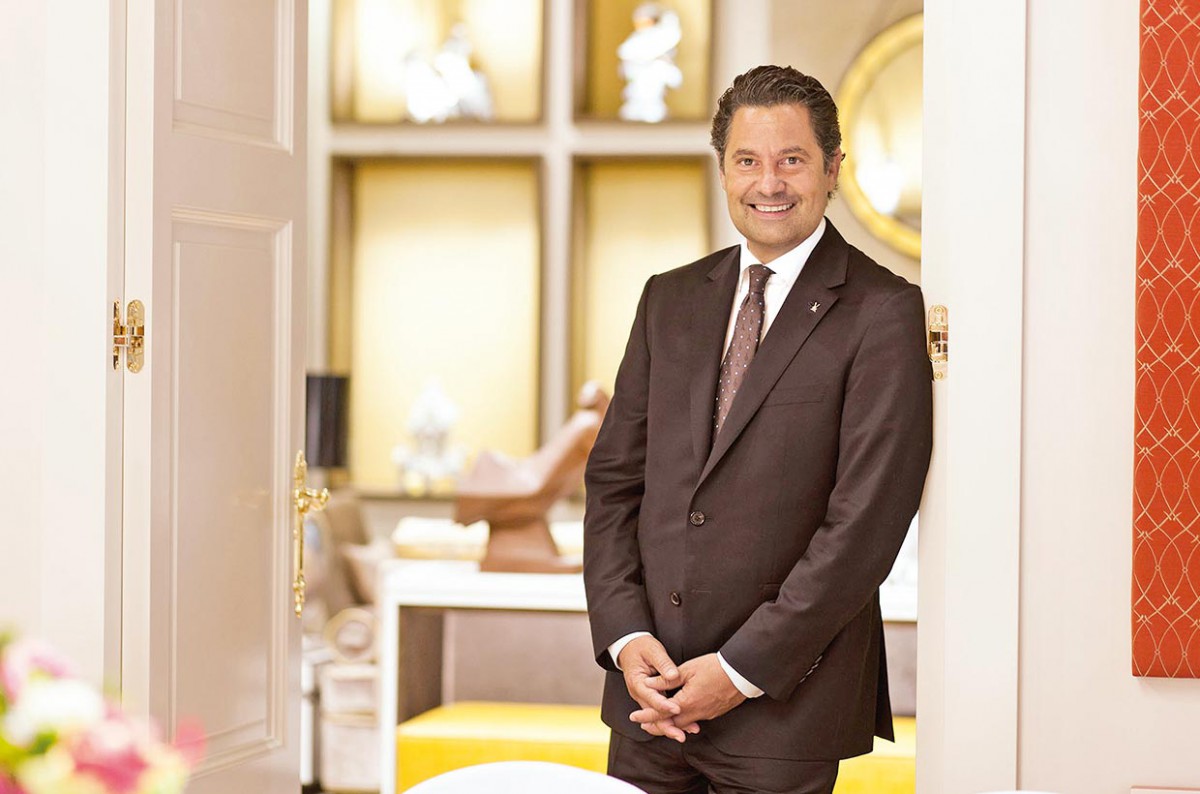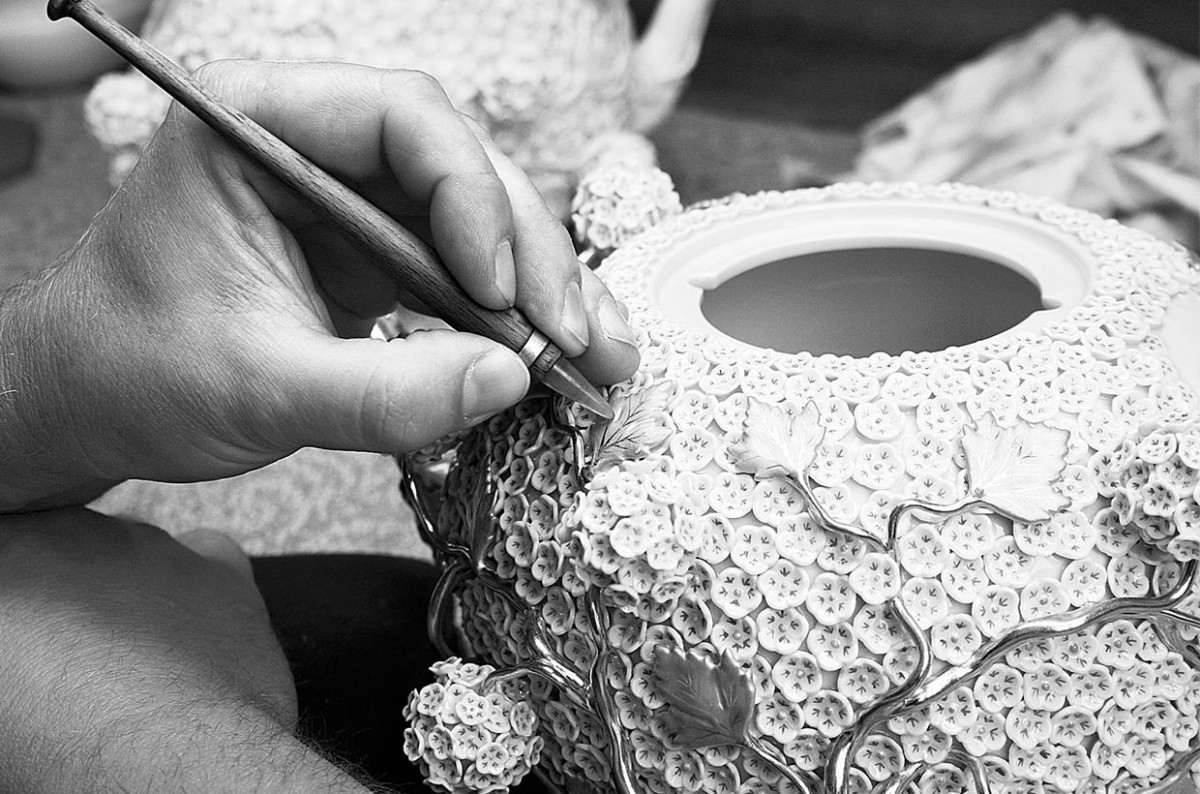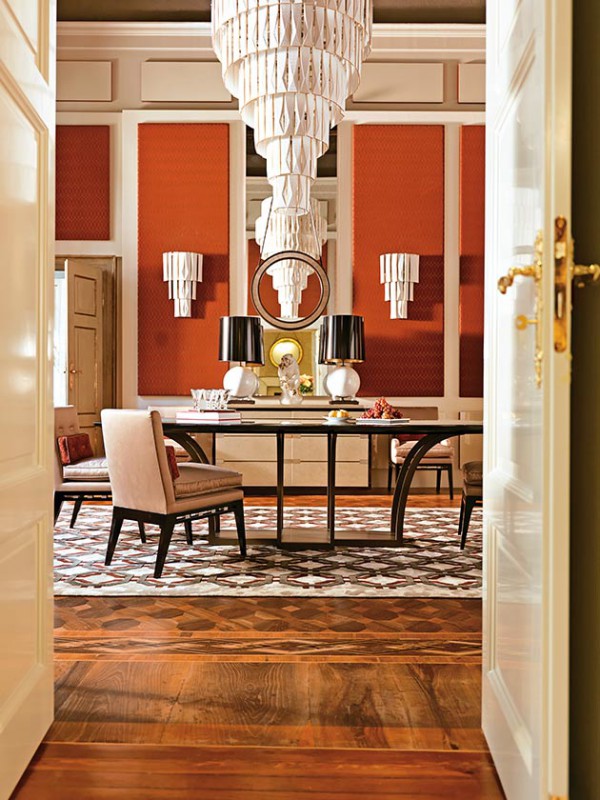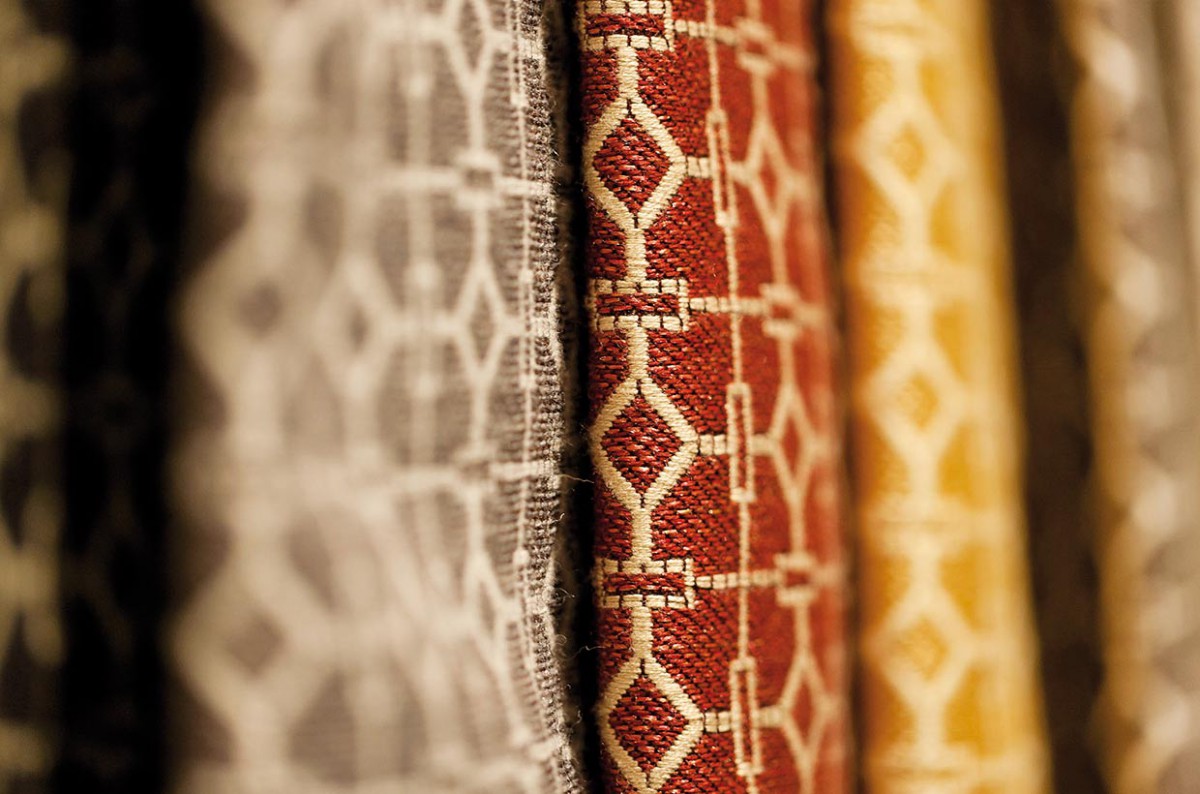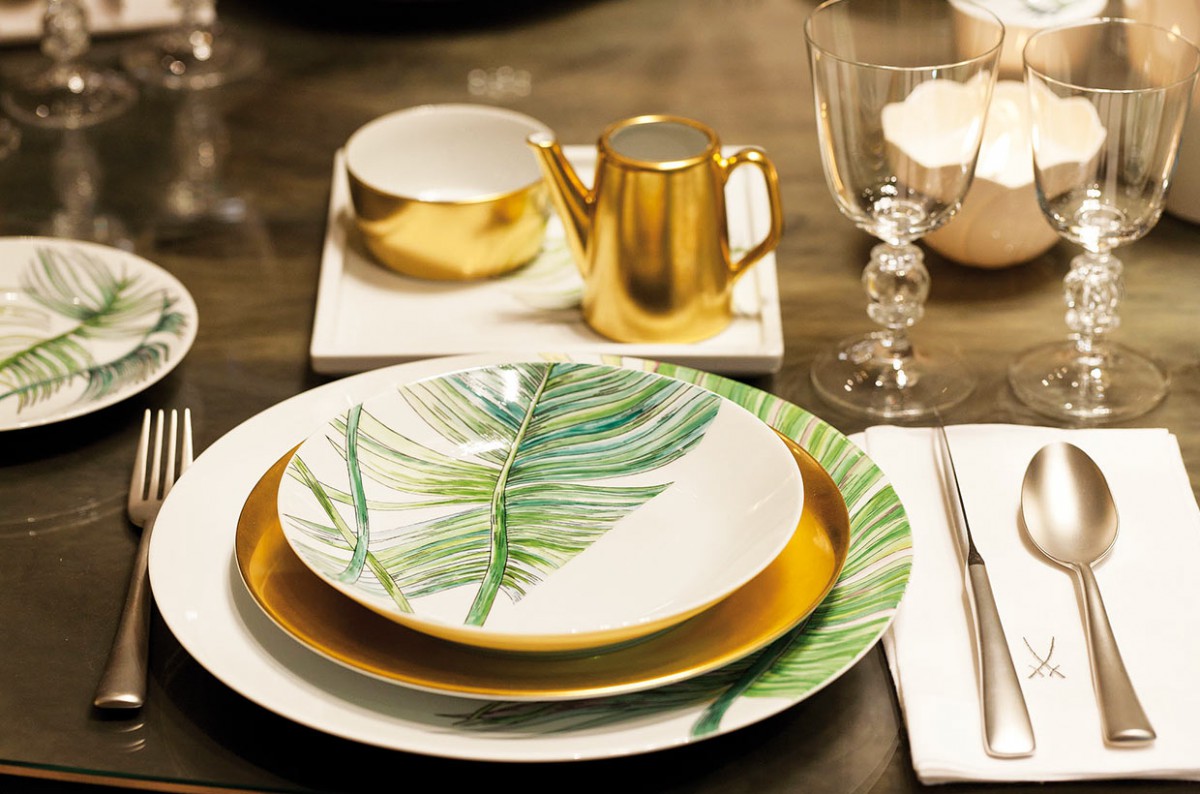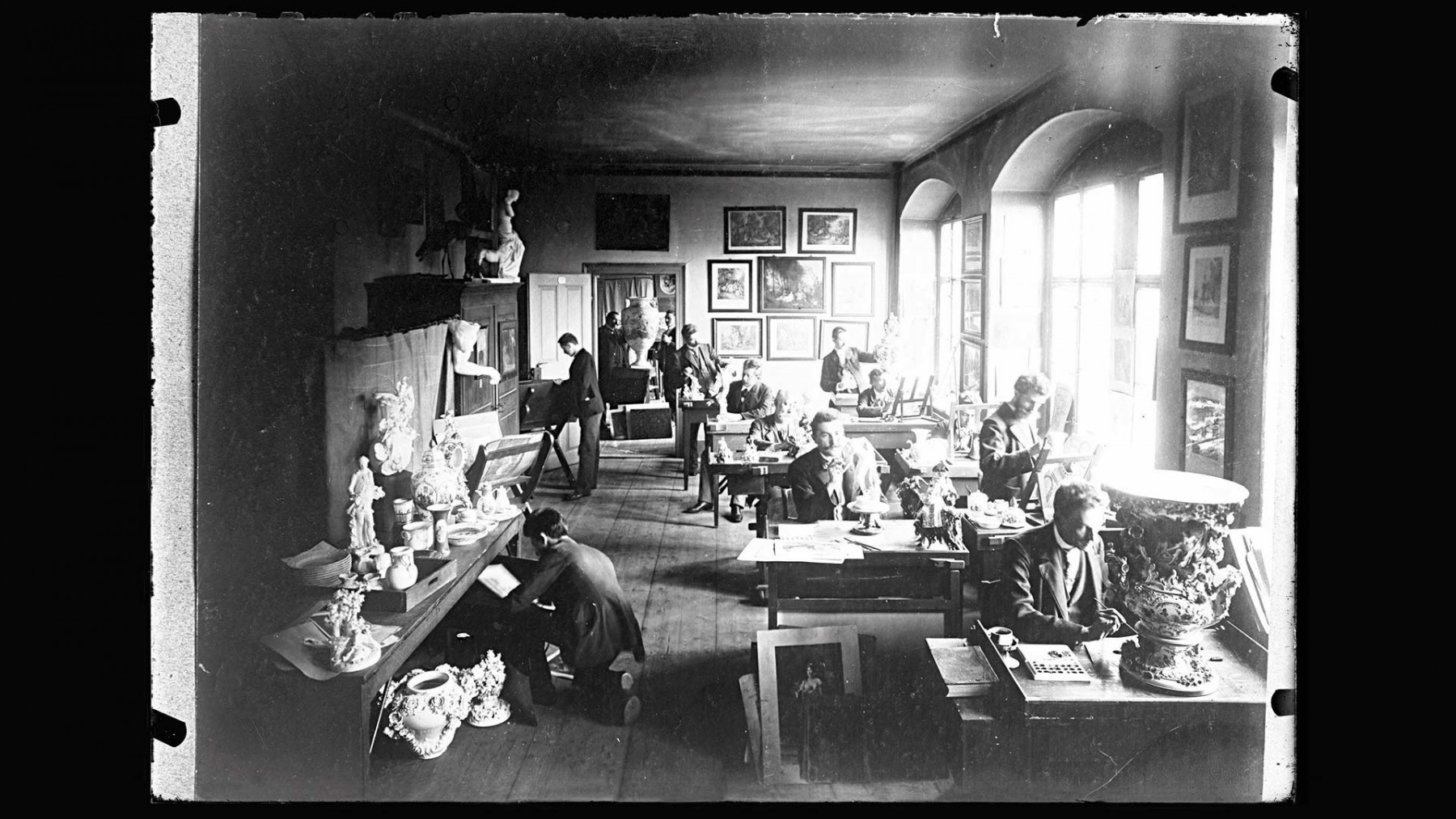Meissen Reloaded by Tanja Pabelick | 20th June, 2014 | Offices
Meissen is ready to take on the world. The Saxony-based porcelain manufactory has branched out into furniture, jewelry and, last season, added haute couture to its portfolio – a new strategy to raise the venerable company into the realm of international luxury brands. Chief executive Christian Kurtzke has been setting the course for the past six years.
As the finishing touch, they are painted onto the base, where few people bother to look: four fine, crossed brushstrokes. This mark is considered the oldest trademark in the world and it is the iconic signature of the Meissen company. Meissen’s unique history tells of benchmarks being set and records being broken. Founded in Saxony in 1710, the porcelain manufactory was the first in Europe and is currently its oldest. Until the beginning of the 18th century, China – the inventor and jealous guardian of the production process – was considered the king of the porcelain castle, a position it exploited and protected. The costly porcelain tableware, vases and figurative decorations were literally worth their weight in gold. Lured by the promise of untold profits, the aristocracy poured vast resources into their own workshops in the hope of discovering the secret of the “white gold.” The recipe was eventually found in Dresden by Johann Friedrich Böttger, who August the Strong had brought to court in order to make gold. When this proved impossible, Böttger turned his mind to the challenge of making porcelain, which was equally valuable, in order to please the king, who claimed to be suffering from an illness called “maladie de porcelaine.”
The first ceramic paste Böttger came up with looked very much like chocolate, but eventually he discovered the missing mystery ingredient for making white, translucent porcelain like the Chinese: kaolin. The manufactory was founded and a kaolin mine opened. This mine is still going, and with two employees, is Germany’s smallest. Very soon the porcelain made in Saxony was deemed, by fine society at least, far superior to the Chinese variety in terms of beauty and design. Meissen has remained synonymous with the highest quality. Collectors pay millions for rare figurines and the brand’s largest fan base – an irony of fate – is now in Asia. After coasting for decades, an abrupt change suddenly took place, and a few years into the new millennium, the venerable brand – previously known for its close adherence to tradition – started attracting attention with some startling innovations.
The man behind this change was Christian Kurtzke, a former executive at Boston Consulting and a mere 39 years old when he joined the company as its new CEO in 2008. The radical rejuvenation cure was a response to a serious trend, known succinctly as the porcelain crisis. The symptoms are single-person households, coffee-to-go and the decline of Sunday dinner and trousseaus. The fact of the matter is that very few people now buy 12-piece tea sets. An entire industry is faced with the challenge of reinventing itself, a task that applies equally to Meissen and its rivals. Meissen, which is owned by the State of Saxony, resisted change longer than others. But when the coffers were empty things had to happen fast to halt the annual double-digit losses. Happily, the new chief executive swiftly discovered more than just red figures in the books: he homed in on the brand’s solid reputation and dormant potential and soon made clear that the Meissen manufactory was not merely an empty hull of a brand but rather a brand fired by its soul, its heritage, the designs, the exceptional craftsmanship and a dedication to creating one-of-a-kind pieces. Kurtzke never even considered emulating the competition and doing things like shifting production to Asia to maximize margins. His aim was to allow Meissen to re-assert itself. He focused on the brand’s vast and unique potential in the hands of its artists – and in Meissen’s basement. He found the inspiration to fuel change in the company’s archives: patterns and motifs from the past, color palettes and historical molds.
Kurtzke’s objective is to reposition the company with new products and expand it to become an international lifestyle brand. To achieve this, the company has set up new departments, has silk scarves produced for its Accessories division, launched a jewelry and watch collection and presented a whole new line of interior decorations ranging from furniture to wall coverings. “The aim is to establish Meissen Home as the leading German brand for interior design,” he explains. “And in doing so, we are aiming to cover the entire interiors segment – from floor to ceiling, bathrooms, kitchens and living rooms.” The brand’s existing vocabulary has been rearticulated in new contexts. Plates are turned into tiles, the platinum edge has become a surface finish. Meissen is no longer just about tableware and dining, but now also encompasses accessories and gowns, cupboards and tiles. Traditional and contemporary styles are skillfully interwoven, for instance when miniature tiles lovingly hand-painted with dragons or flowers shimmer through amethyst, quartz and rock crystal on a pendant. All of these innovations, as far removed from porcelain as they may appear to be at first glance, are based on at least one of Meissen’s three main pillars: the porcelain and artisans, the color and pattern archives, and the brand symbol.
What he did was not necessarily easy for the iconoclastic visionary, as tradition does not usually greet change with open arms. “It wasn’t as if people were waiting for me to make an appearance. Nobody says: how wonderful that somebody is changing everything.” In essence, much of what Kurtzke has been implementing isn’t that new. When the alchemist Böttger invented brown porcelain instead of gold, he had two pieces of jewelry made for August the Strong. And furniture has featured in the brand’s portfolio before: “At the Chicago World Fair in 1893, we showed furniture in a mix of materials: fabrics, bronze, wood and porcelain,” says Christian Kurtzke, setting the record straight.
He now sends these items to Hong Kong, where a new showroom has just been opened, or to the Via Montenapoleone in Milan, which is considered the most elegant street in a city renowned for its elegance. This is where the Villa Meissen is situated, a showroom where the pioneering CEO has moved into areas that have not hitherto featured in the company’s history. In the garden of the villa, at Milan Fashion Week, Meissen presented couture for the first time ever: seventeen intricately tailored and embellished evening gowns with full skirts, appliquéd flowers and dazzling crystals, which resembled the brand’s historical figurines. “From the outset it was my dream to delve deep into the archives and make haute couture inspired by the brand’s heritage. It is exciting to watch people experience Meissen in a completely new way,” says Kurtzke. His sure instinct for the brand’s new potential is reflected elsewhere, too: in the latest ranking for German luxury companies, Meissen has climbed into the top ten. TP
